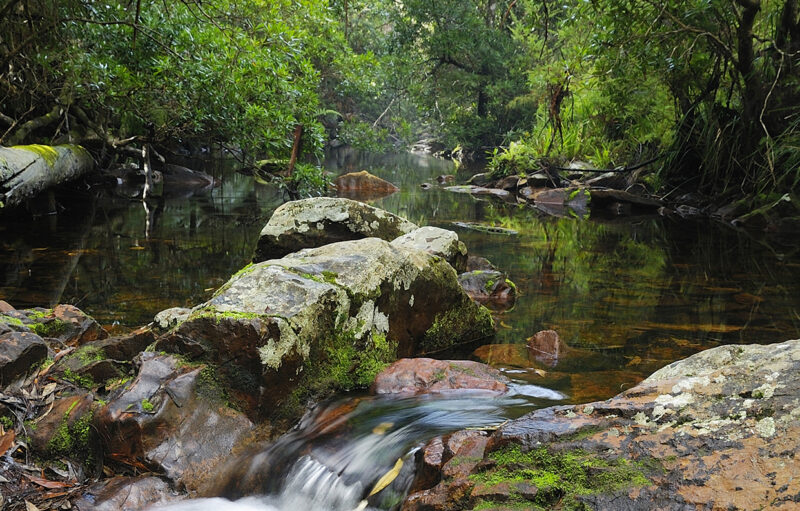PARK WATCH Article March 2025 |
Shannon Hurley, Nature Conservation Campaigner, dives into the Discovery Bay Marine National Park and its monitoring program
Discovery Bay Marine National Park is Victoria’s gateway to the Great Australian Bight and the Southern Ocean, framed by Cape Bridgewater’s cliffs to the south and Discovery Bay’s sand dunes to the north. The park’s coastline, formed by ancient volcanic lava, is part of the largest coastal basalt formation in western Victoria. It’s subject to one of the state’s highest wave energy environments.
The vibrant sea life here thrives thanks to the cold, nutrient-packed waters of the Bonney Upwelling, brought to the surface by summer winds and currents. This feast of nutrients sparks a bloom of tiny plants and animals, attracting fish, whales, penguins, and a colourful array of seafloor life – like swaying sea fans, lush mosses, colourful sponge gardens, and curious sea-squirts.
Monitoring is crucial in the park due to threats like illegal fishing, disease, climate change, and the spread of marine pests from nearby harbours.
Warming waters have caused declines in some macroalgae, though the cooler waters may provide some refuge. Monitoring is essential to track the park’s health and determine if management interventions are needed.
Monitoring a park 14 to 75 metres deep is not without its challenges. Luckily, the experienced researchers at Deakin University have it covered. They’ve deployed high tech underwater vehicles and baited video stations to record what fish and habitat types lie beneath. The monitoring revealed:
Rock lobsters are going strong. A higher abundance (three times in fact!) and larger-sized Southern Rock Lobsters within the park, compared to outside. This reiterates the importance of marine national parks to protect important reef wildlife.
Diverse fish call the park home. Including Scad, Redbait, Jackass Morwong and Rosy Wrasse.
Threatened sharks and rays sighted. Namely, Critically Endangered School Sharks, Vulnerable Melbourne Skates, protected Blue Groper and Elephantfish.
More fish in the park. Richness increased both within and outside the park, but abundance increased only inside the park. This indicates the long-term benefits of protection.
Overall, Discovery Bay’s ecosystem remains strong, serving as a key climate hotspot for studying the effects of climate change on marine life. However, like any marine environment, monitoring is often hindered by weather conditions.
Ongoing monitoring is crucial to better understand how climate change impacts wildlife movement, in an area that remains poorly understood along Victoria’s coastline.
- Read the latest full edition of Park Watch magazine
- Subscribe to keep up-to-date about this and other nature issues in Victoria
- Become a member to receive Park Watch magazine in print
